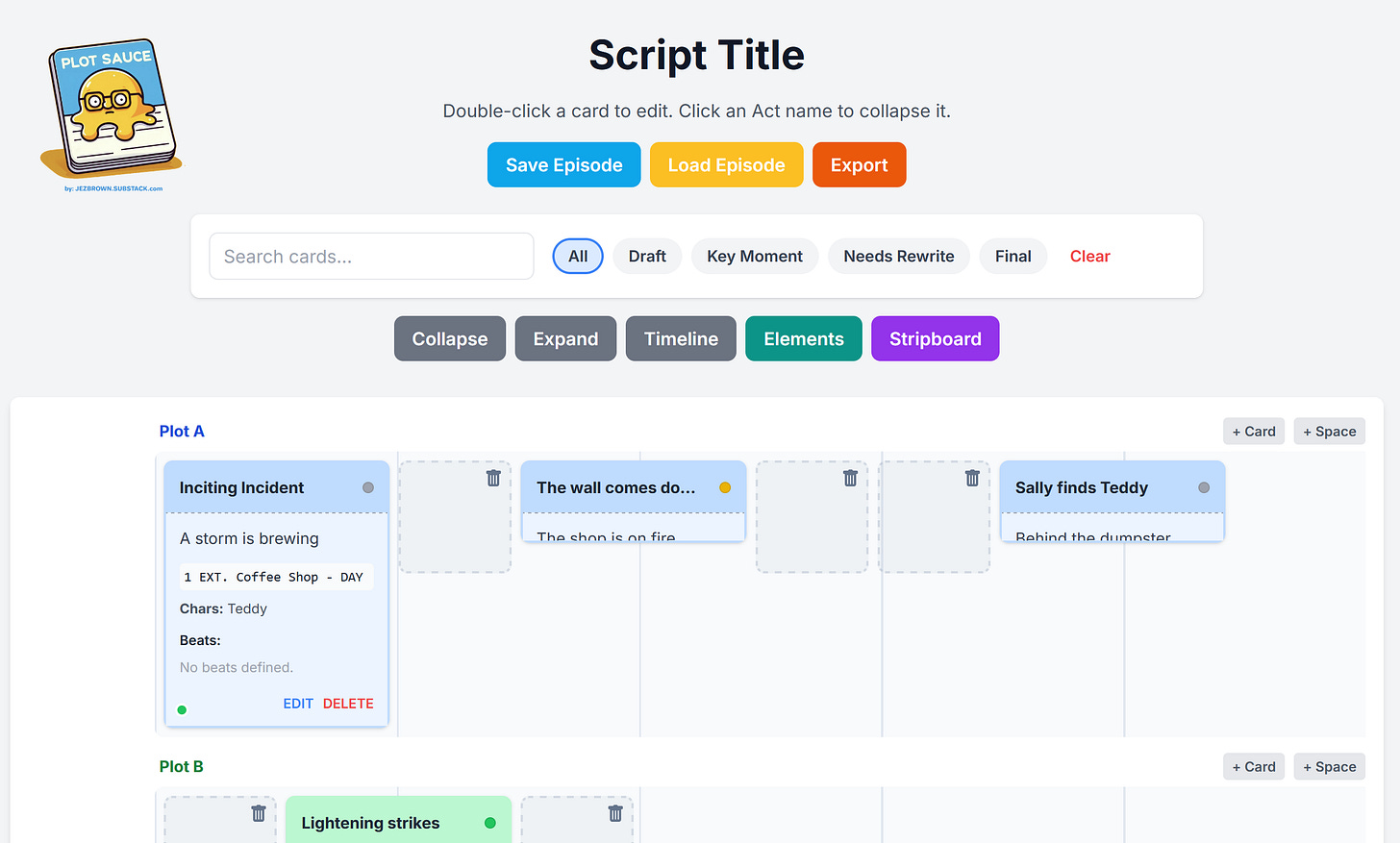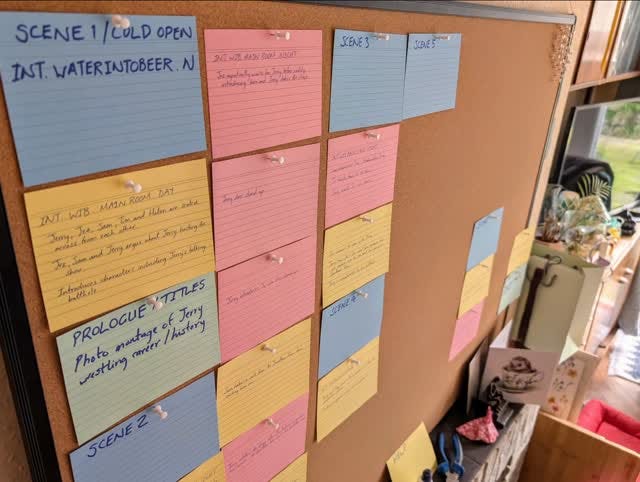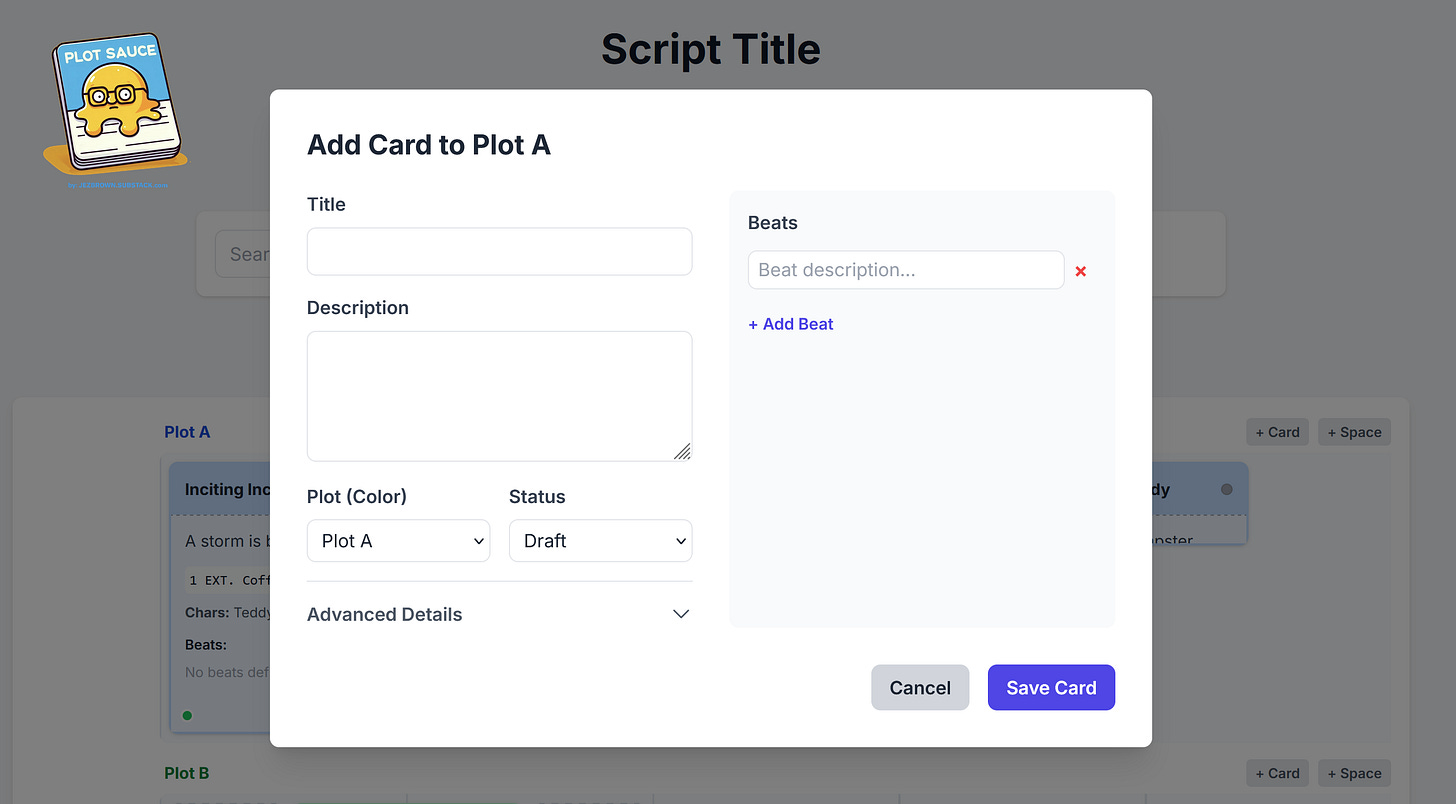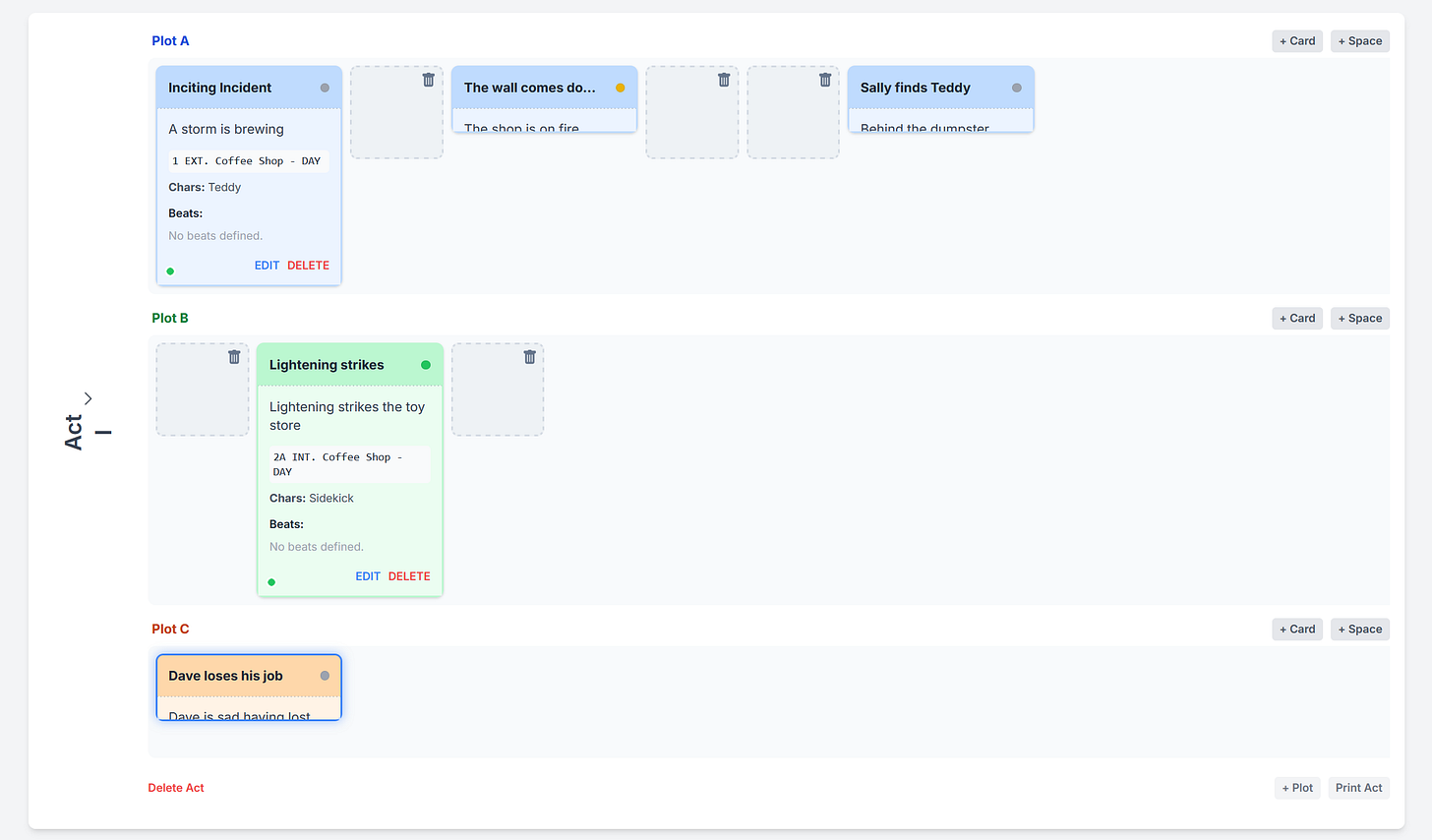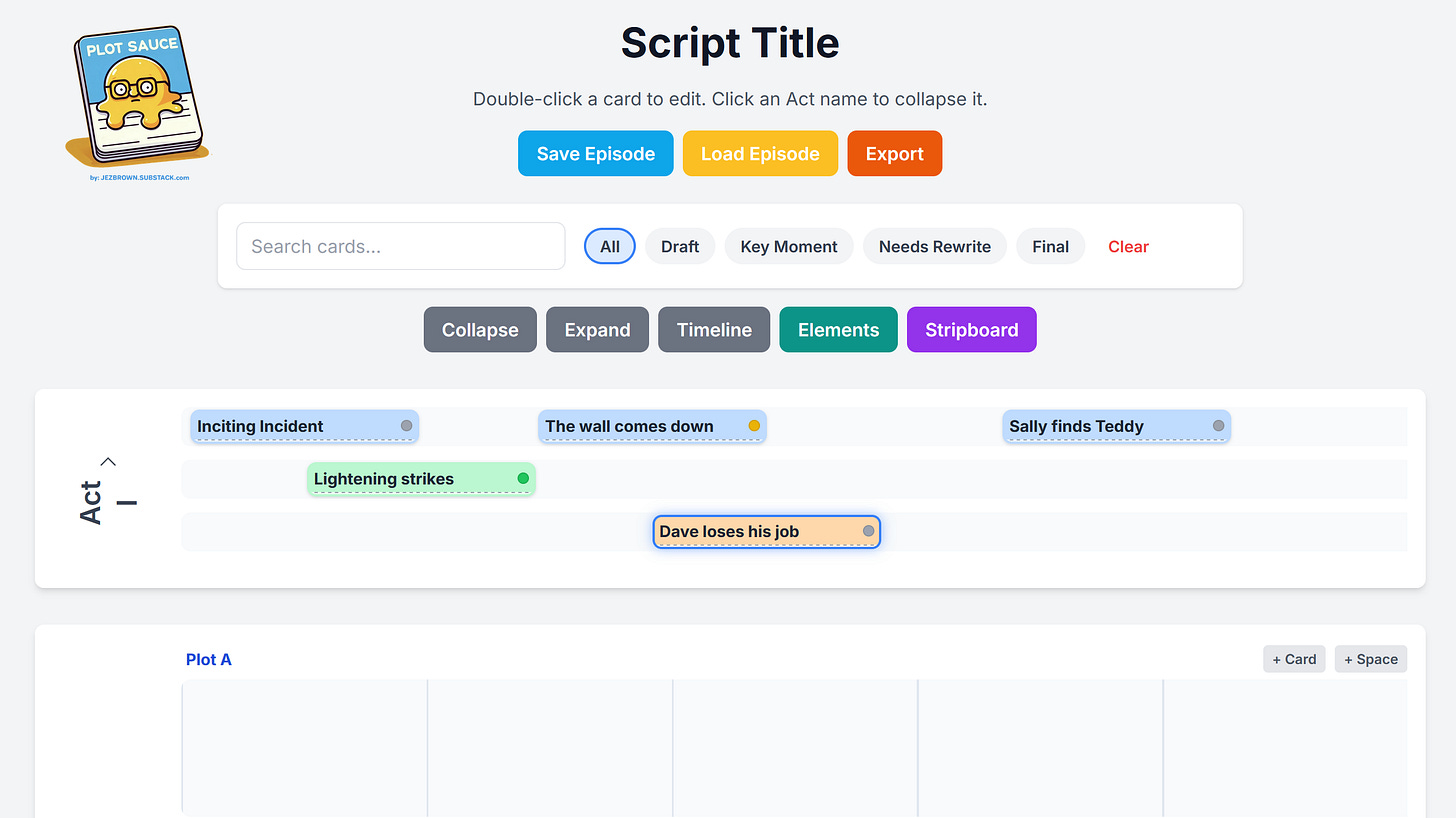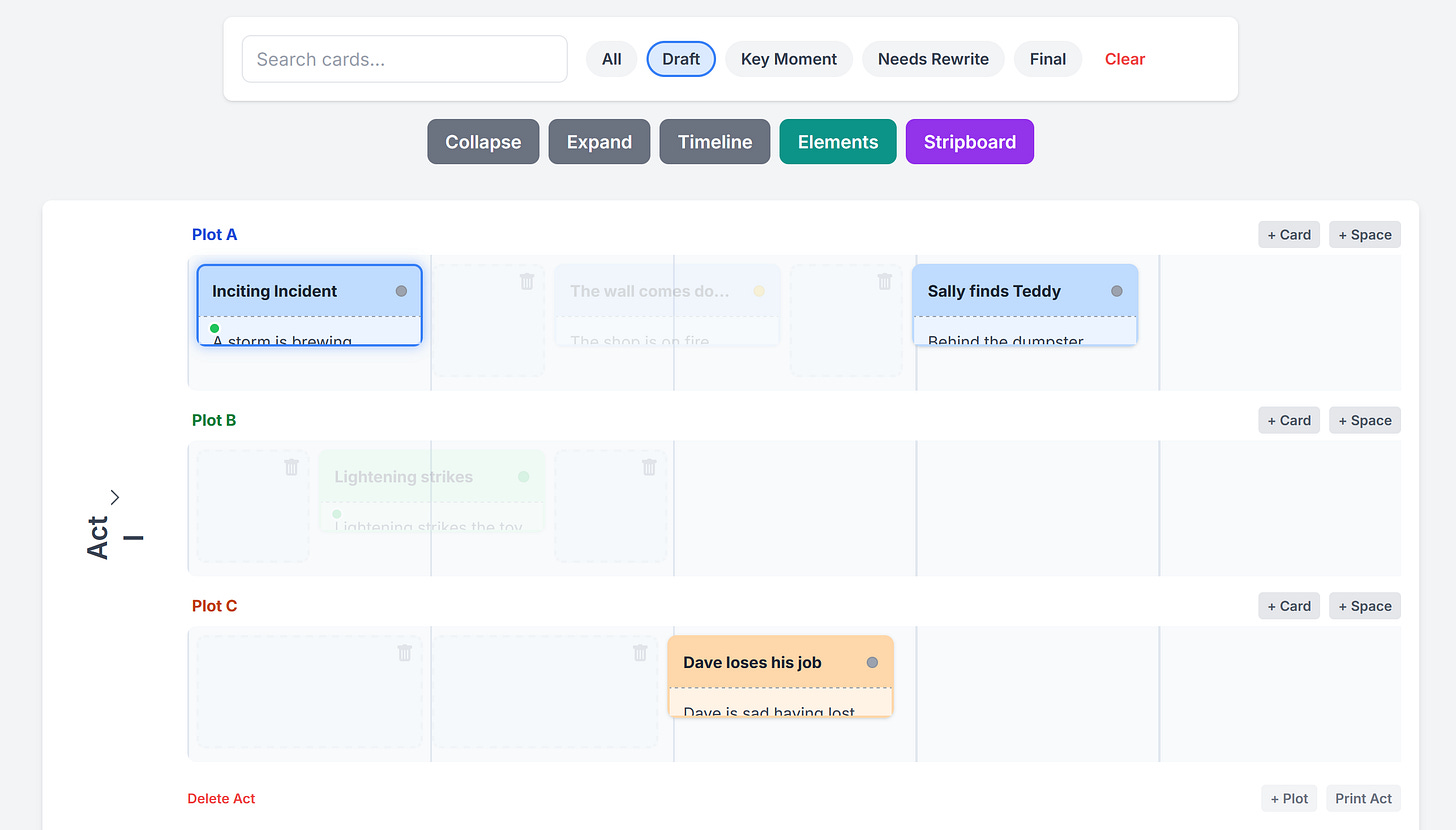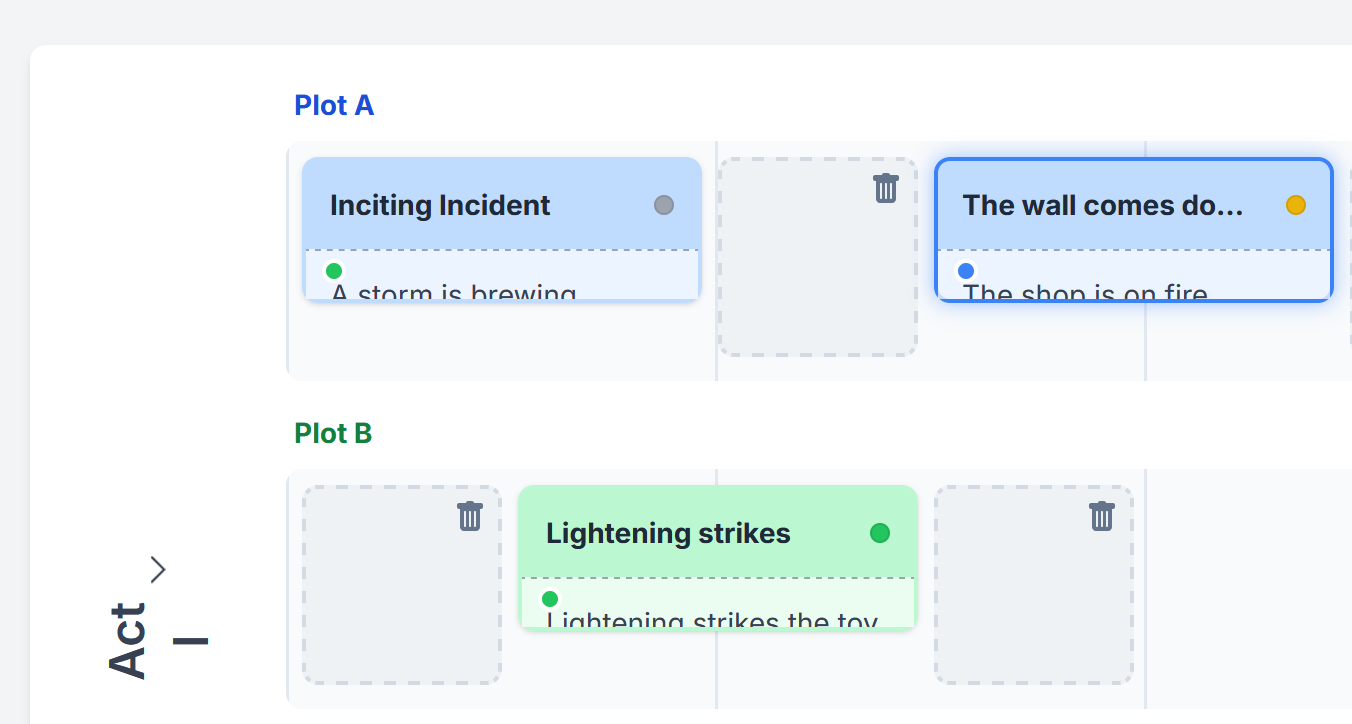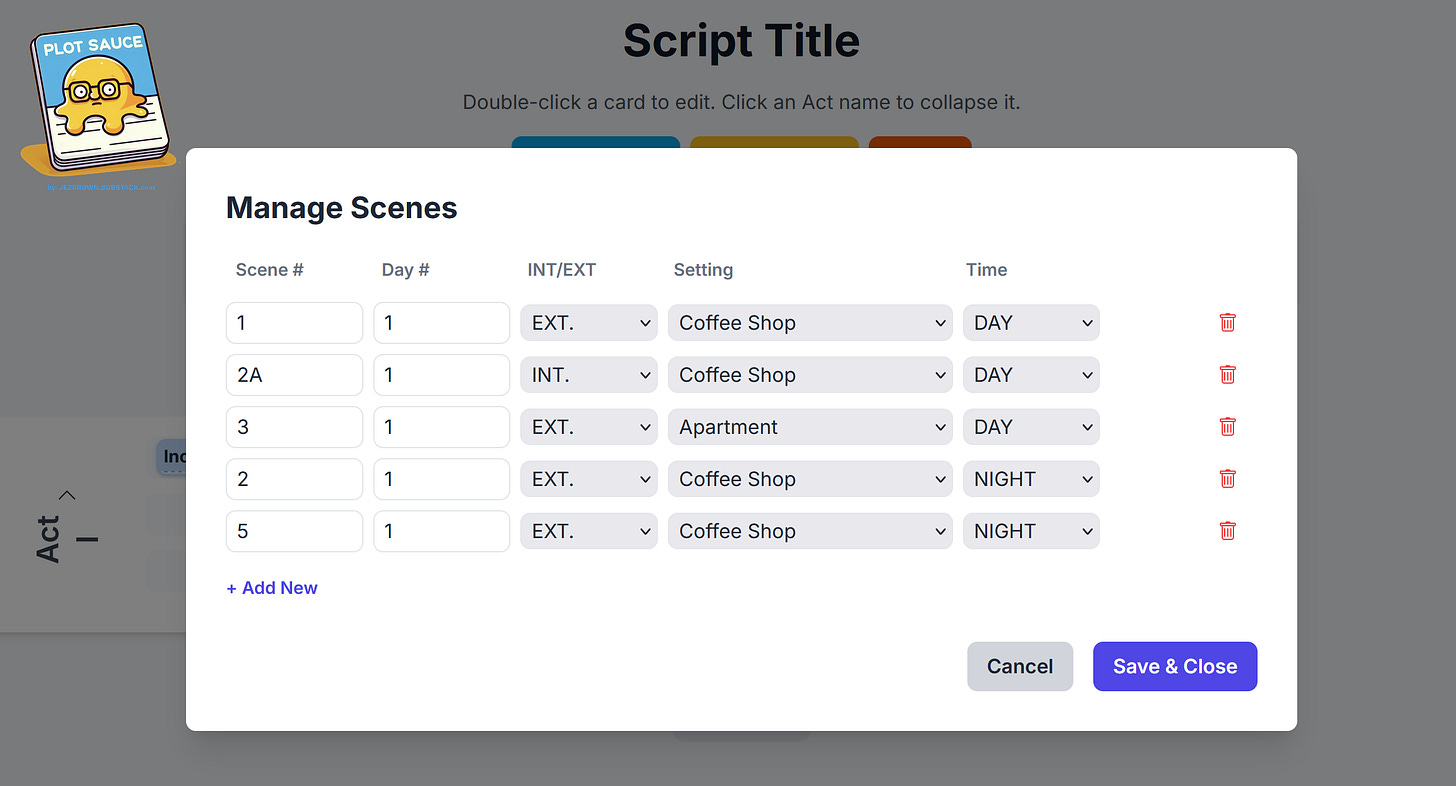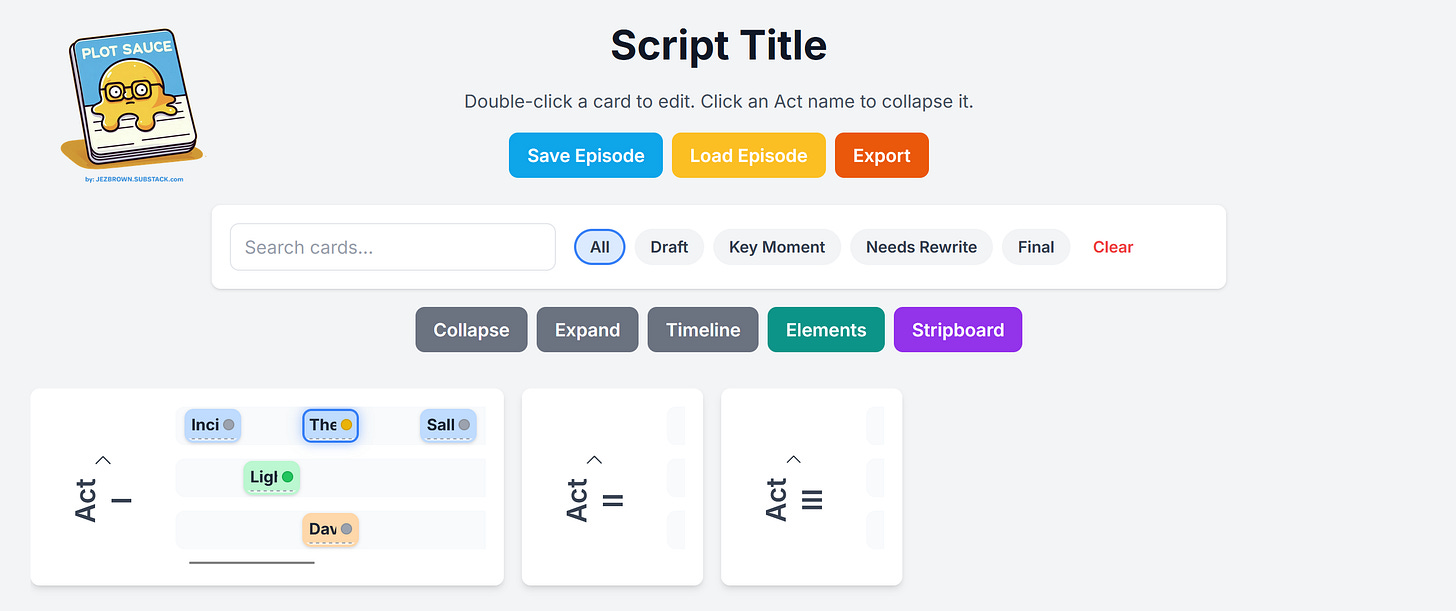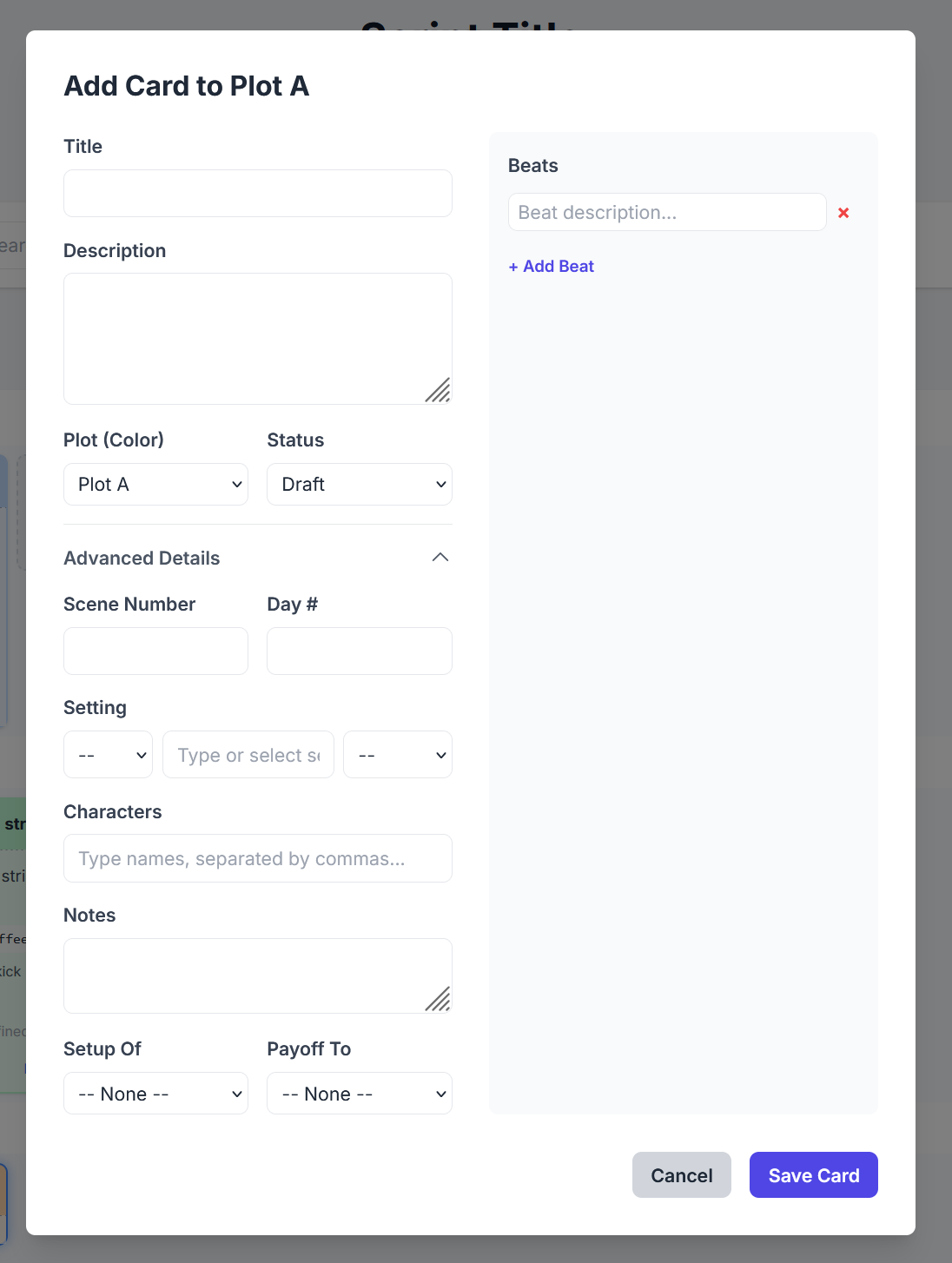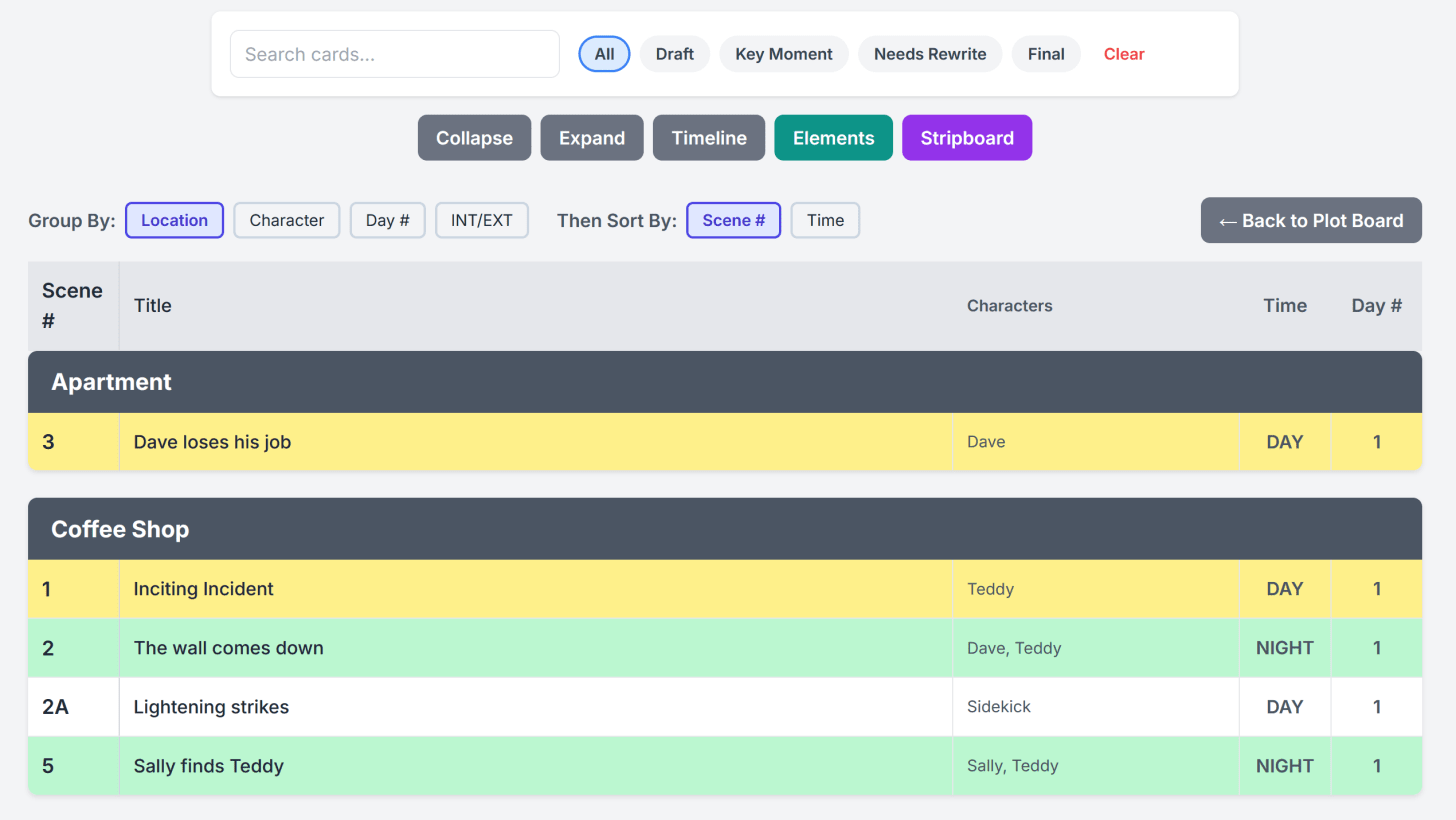New version out now! » Read about the updates here.
Or try the new website » www.plotsauce.com
I made this app to help you plot what you intend to write - in that order.
As writers we always want to jump right in and play with our characters, but in doing so create a mess of our own creation.
If you use Plot Sauce and find it useful, please consider signing up to this Substack for a single year. It’s £20 I can put back into the software. Now go break some stories!
I went looking for plotting software that mimicked the tried and true method of physical plot boards..
..and when I didn’t find any, I built my own..
And it weirdly works.. really well
Plotting is my weakest suit and I’ve spent a lot of time trying to rectify that.
My poor housemates had to put up with giant cork boards and endless coloured cards strewn all over the living room.
I like physical mediums, but I needed something that didn’t piss everybody off.
Who needs wallpaper?
Plotting isn’t always the most fun aspect of writing, but getting it right up-front saves you so much time and heartache later.
It shouldn’t feel imposing either, so I made software that starts small and simple, but allows you to add more information when you’re ready.
You can enter basic information on your plot cards to begin with, then add advanced information when the time is right. It’s all about doing the basics right first.
A lot of television has three plot threads running over three acts, so that’s the default a project opens on. However you have the option to add more plots and acts as you see fit, or delete them if you want to simplify.
Hot tip: if you click on the plot heading, only that plot thread will become visible, making it easier to concentrate on what you need to work on.
You can move cards around, expand or collapse them, and double click to edit their details.
How you read your timelines is up to you:
Maybe you’re a ‘left to right’ person and want all your cards on the same timeline - you can do that.
Or maybe you visualise different plot points in concurrent scenes, so prefer to stack them - you can do that too.
All plot cards and spacers can be made ‘full’, ‘half’ and ‘quarter’ sized depending on how you want your timeline to look.
You can also ‘collapse’ an Act by clicking on ‘Act’, ‘expand’ all the cards to read them all quickly, ‘collapse’ all the timelines to get a visual guide of your story, or view that guide as a single full ‘timeline’.
Clicking any button again returns you to a standard view.
Plotting is like doing a puzzle and I think it’s important to find a way to see that puzzle that works for you. It’s a lot easier when you can step back and see all the pieces at once.
Plot cards have a coloured dot in the top right corner - grey for draft, orange for a key moment, red for rewrite and green for final.
In the search menu you can quickly see which state your cards are in by clicking on the corresponding button - your other cards will fade out giving you a clear view of what you’re looking for and need to work on.
“Why don’t you all just fade away” - Rex Manning
In the bottom left is another dot - blue indicates it’s been assigned as a ‘set up’ or ‘pay off’ to another card, green means you’ve matched them up.
You do this at the very bottom of the card editor (just double click on any card) and helps you connect story threads or see when you have something unresolved.
One of these things is not like the others..
Need to change details about scenes, characters or settings? You can go into ‘Elements’ and repopulate all your cards with the new info from one place.
Remember to SAVE your work!
This will put a tiny .json file on your device you can then reload later or share with anyone.
And that’s it.. let’s go home!
Oh no, WAIT, I built in a bunch of other features.
The timeline view let’s you see your whole story lined up. It’s an easy way to see pacing and whether you’re top or bottom heavy. Did one of your plots go awol?
You can expand the timelines in this view by hitting the ‘Act’ button.
When you open the ‘advanced details’ in your plot card, you can add a lot of the usual details you’d find in a script, such as creating a scene header.
This will become really handy in just a minute..
I like to start small, get the cards on the board, but as your story comes together you can add lots of useful details for the next phase..
Sure you can output a ‘beat sheet’ or ‘rundown’, but you can also output a ‘fountain’ file, which you can load into ANY script writing software and it’ll put the structure of your story right on the page with scene headers and all!
THEN you can start writing!
You can put the bones of your plot right on the page, then flesh out your script knowing it won’t become a Frankenstein’s Monster.
And finally..
When you’re ready to shoot your script, you can go into ‘Stripboard’ mode.
Stripboarding was all the rage in 60’s Hollywood and can be at your house too.
Stripboarding puts all your script elements in one easy to manage place so you can actually go out and SHOOT IT!
Save time and money knowing which scenes you can shoot on the same day at the same location or with the same actors. You can tell which day it is so you know what clothes your actors have on, or which scenes all need to be shot at night.
The interface lets you dial in the detail you need. Your art department will love you for it.
And that, in a nutshell, is ‘Plot Sauce’.
If you like it or get some use of it, please consider a year of paid subscription, it helps me a lot, and of course tell other people about it - cause why not?
Have fun, make stuff and when you do, come back and tell us all about it in the comments.



